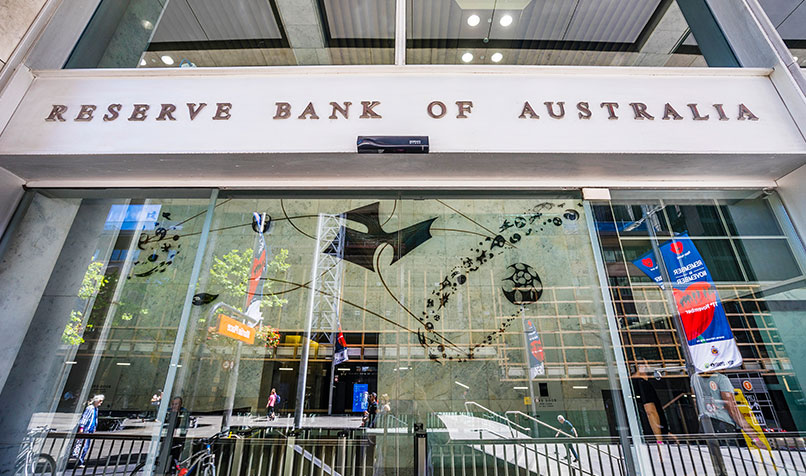Loading component...
At a glance
- Central banks around the world have been fast-tracking the process of developing digital versions of official national currencies.
- The development of central bank digital currencies is driven by major advances in electronic payment systems that have led to declining use of physical cash.
- The Bank for International Settlements estimates that, over the next three years, central banks representing a fifth of the world’s population are likely to issue their own general purpose digital currencies.
By Gary Anders
In the midst of the COVID-19 pandemic, there has been a seismic shift in the way many people around the world are approaching financial transactions.
Concerned about virus transmission, many consumers and businesses have moved away from paper money towards electronic payments.
In effect, though, the payment trend accelerated by COVID-19 has already been under way for a number of years, spurred by major advances in electronic payment systems.
Rather than using cash, consumers are preferring to use their mobile phones to tap and pay for just about everything.
This is why a large number of central banks around the world are leveraging technologies to fast-track the development of digital versions of official national currencies.
Once launched, central bank digital currencies (CBDCs) – fully backed, administered and regulated by their respective national governments – are expected to greatly reduce the number of physical bank notes and coins that need to be manufactured and kept in circulation.
CBDCs will also be going head-to-head with the plethora of unregulated and volatile cryptocurrencies already in operation, such as Bitcoin and Ethereum.

In a recent report on the development of CBDCs, the Swiss-based Bank for International Settlements (BIS) notes that over the next three years, central banks collectively representing a fifth of the world’s population are likely to issue their own general purpose digital currencies.
Among the nations well advanced in CBDC testing is China, which is developing a digital version of its yuan. Also right up there in the digital currency race are the US, Japan, the UK and Canada, as well as the European Union.
“As a whole, central banks are moving into more advanced stages of CBDC engagement, progressing from conceptual research to practical experimentation,” says Codruta Boar, from BIS’s monetary and economic department.
“Around the globe, interest in CBDCs continues to be shaped by local circumstances. In emerging markets and developing economies, where central banks report relatively stronger motivations, financial inclusion and payments efficiency objectives drive general purpose CBDC work,” Boar says.
Frameworks and challenges
There is no questioning the momentum for CBDCs to become the future norm for both wholesale and retail financial transactions is growing rapidly.
However, at this stage at least, the framework around how CBDCs will actually operate in the real financial world, especially for consumers wanting to use them in place of cash or other construction.
On a very basic level, CBDCs will work in the same way as any legal tender and enable individuals to transact electronically using their domestic currency. What governments are still grappling with is how CBDCs will function in cross-border transactions involving other digital currencies.
Some financial commentators have pointed out that the potential for rapid adoption of CBDCs could lead to large amounts of money being withdrawn from banks and other financial institutions, which rely on holding large cash reserves to fund business lending, mortgages and other types of finance.
As such, they say there will need to be an efficient flow of money across domestic and international financial systems to ensure the capital requirements of financial institutions are not compromised, especially during crises.
"We need a supportive digital assets framework to encourage innovation and to bring Australia up to speed with all of the mainstream and increasing adoption of digital assets that we're seeing across Europe, China and the US"
At a BIS conference in March 2021, Jerome Powell, chair of the US Federal Reserve, said CBDCs would need to coexist with cash and other types of money in a flexible and innovative payment system.
“The COVID-19 crisis has brought into even sharper focus the need to address the limitations of our current arrangements for cross-border payments,” Powell added.
At the same conference, Mu Changchun, director of the Digital Currency Research Institute at the People’s Bank of China, called for a set of global rules for CBDCs to control how they can be used around the world.
“Information flow and fund flows should be synchronised so as to facilitate regulators to monitor the transactions for compliance,” Mu said. “We also propose a scalable and overseen foreign exchange platform supported by DLT [distributed ledger technology] or other technologies.”
Blockchain is one example of distributed ledger technology, with information collected and stored in digital blocks, which are linked together so the information can be easily accessed in sequential order.
Tackling CBDC regulation
Peter Koo, leader of IT and specialised assurance at Deloitte China, says the foundation of a dedicated regulatory and legal framework facilitates the development progress of CBDCs.
“While the central banks are working on the topic to replace cash notes in circulation, CBDCs come in as a double-edged sword,” Koo says.
“Under circumstances that central banks are able to track personal transaction details, on the one hand people may argue that CBDCs arouse issues of confidentiality and privacy.”
On the other hand, the beauty of the technology is the security it affords cross-border transactions, as well as its ability to curb speculative volatility and illegal activity, and to encourage information sharing among institutions to enhance customer experience, Koo says.
As more CBDCs are launched, governments will be keen to ensure their currencies are not affected by other, more dominant currencies.
“There is potential for governments to use technologies to make their digital currencies more popular than others. Central banks could try and strengthen their financial influence. Those not catching up may be left out,” Koo says.
As for the potential for political interference in certain financial exchanges, “there are lots of factors. Technology is great and advancing very fast,” Koo says.
CPA Library
RBA takes a cautious approach

The Reserve Bank of Australia (RBA) announced in November last year that it was partnering with Commonwealth Bank, National Australia Bank, Perpetual and ConsenSys Software to explore the potential use and implications of a wholesale form of a CBDC using distributed ledger technology.
The project involves the development of a proof-of-concept for the issuance of a tokenised form of CBDC that can be used by wholesale market participants for the funding, settlement and repayment of tokenised syndicated loans.
Yet, in a follow-up research paper on CBDCs, the bank’s payments policy department notes the public policy case for issuing a general purpose CBDC in Australia is still to be made.
“Even though the use of cash for transactions is declining, cash is still widely available and accepted as a means of payment,” the RBA says.
“Households and businesses are also well served by a modern, efficient and resilient payment system that has undergone significant innovation in recent years.
“However, consistent with its mandate to promote competition and efficiency in the payments system and contribute to the stability of the financial system, the bank will continue to consider the case for a CBDC, including how it might be designed, the various policy implications and the future conditions in which significant demand for a CBDC might emerge.”

Joni Pirovich, special counsel tax, blockchain and digital assets at law firm Mills Oakley, says it will be important to create policy settings to support Australian innovation that can compete with global trends in digital assets and payments.
“We need a supportive digital assets framework to encourage innovation and to bring Australia up to speed with all of the mainstream and increasing adoption of digital assets that we’re seeing across Europe, China and the US,” she says.
Pirovich also sees CBDCs working in tandem with other digital currencies such as Bitcoin, which would evolve into an alternative asset class used to store wealth.
“The truth is that Bitcoin and Ethereum are not likely going to be used for everyday payments,” she says.
“All of the criticisms against them, that they’re not good for payments, is a ‘furphy’ – use for payments shouldn’t be front and centre, it’s the increasing use of Bitcoin and Ethereum as a store of value that may become the digital equivalent of owning your own home,” she says.
“You can have that value and loan against that value. Bitcoin and Ethereum are increasingly being seen as the ‘gold’, even if volatile,” Pirovich says.
"There is potential for governments to use technologies to make their digital currencies more popular than others. Central banks could try and strengthen their financial influence. Those not catching up may be left out."
“You might have the dream of owning your first Bitcoin and Ethereum, because those are the digital assets front and centre in blockchain-based innovation, and where blockchain-based infrastructure could become the backbone of the digital economy.”
In the meantime, from the RBA’s current approach it appears that there is no immediate demand or reason to issue a general use Australian central bank digital currency.
“Australians aren’t going to demand a general use CBDC,” Pirovich says. “The programmability offered by a CBDC would be the centrepiece of critical reform needed to truly bring Australia into the digital economy, and a CBDC would promote innovation in digital assets and payments by Australian entrepreneurs.
“The linchpin here is that if we do not have a digital Australian dollar, then fewer and fewer transactions in the digital economy will be observable or actually transacted in Australian dollars.
“The use of privately issued digital currencies, such as the proposed Libra [now Diem] by the Facebook consortium and decentralised tokens, could greatly inhibit the RBA’s ability to achieve its mandate to produce effective monetary policy and financial stability, because they won’t be able to capture the extent of transactions that are being undertaken by Australians denominated in any number of digital assets.”

